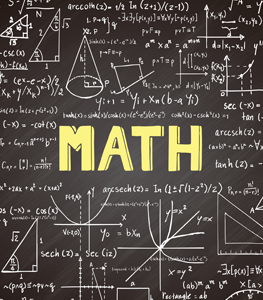Online Tutoring for Maths (Year-12)

Welcome to our Year 12 Maths tutoring program! Our online sessions are designed to provide comprehensive support to students as they navigate the complexities of senior-level mathematics. Our tutors provide in-depth explanations and clear examples to ensure a thorough understanding of complex mathematical concepts.
- We focus on developing problem-solving skills and critical thinking abilities required for tackling challenging mathematical problems.
- Students are guided through strategies for breaking down problems, identifying key information, and applying appropriate mathematical methods.
Course Content
Number, Algebra, Measurement, Space, Statistics, Earth geometry, time zones, Relative frequencies, Data collection, Graphs, Scales, plans and models, Time and Probability
Summarizing some important topics below ( the actual Curriula contains more than these topics)
- Apply the cosine and sine ratios to find unknown angles and sides in right-angled triangles
- Demonstrate familiarity with Cartesian coordinates in two dimensions by plotting points on the Cartesian plane
- Graph linear functions for all values of x with pencil and paper and with graphing software.
- Interpret the point of intersection and other important features of given graphs of two linear functions drawn from practical contexts; for example, the ‘break-even’ point.
- Use a sample space to determine the probability of outcomes for an experiment
- Recognise the properties of common two-dimensional geometric shapes and three-dimensional solids
- Use scales to find distances, such as on maps; for example, road maps, street maps, bushwalking maps, online maps and cadastral maps
- Interpret information presented in graphs, such as conversion graphs, line graphs, step graphs, column graphs and picture graphs
- Ascertain the reasonableness of answers to arithmetic calculations
- Calculate perimeters of familiar shapes, including triangles, squares, rectangles, polygons, circles, arc lengths, and composites of these.
- Convert units of rates occurring in practical situations to solve problems
- Calculate perimeters of familiar shapes, including triangles, squares, rectangles, and composites of these.
- Use metric units of area, their abbreviations, conversions between them, and appropriate choices of units
- Calculate the volume of objects, such as cubes and rectangular and triangular prisms.
- Use units of energy used for foods, including calories
- Substitute numerical values into algebraic expressions
- Substitute given values for the other pronumerals in a mathematical formula to find the value of the subject of the formula.
- Display categorical data in tables and column graphs
- Display numerical data as frequency distributions, dot plots, stem and leaf plots, and histograms
- Calculate and interpret statistical measures of spread, such as the range, interquartile range and standard deviation
- Determine the overall change in a quantity following repeated percentage changes
- Use several timetables and electronic technologies to plan the most time-efficient routes
- Use formulas to calculate areas of regular shapes, including triangles, squares, rectangles, parallelograms, trapeziums, circles and sectors
- Find the surface area of familiar solids, including cubes, rectangular and triangular prisms, spheres and cylinders
- Estimate and compare quantities, materials and costs using actual measurements from scale drawings
- Interpret plans and elevation views of models
And much more …. Genius Petals’ Tutors always focus on teaching more than the prescribed Syllabus to prepare the students for Competitive exams and make their journey smoother…Like we believe and always focus on ‘’Transforming Learning into Brilliance’’ !!
